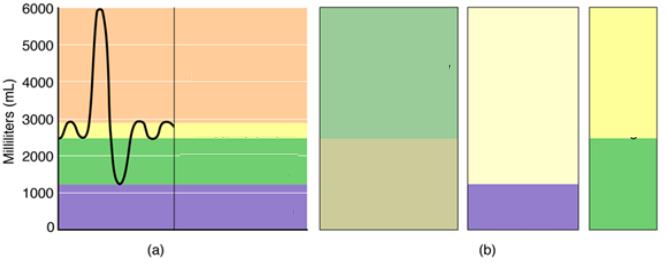Review Exercise
- Select the word which best fits east statement below. Write the word next to the correct statement.
Internal Inhalation Exhalation Rrespiration
Intrapulmonary Increase Decrease Diaphragm
Ventilation Intrapleural Atmospheric Equilibrium
__________ 1. taking air in and out of the lungs.
__________ 2. gas exchange
__________ 3. Pressure in the lungs ___________ during inhalation.
__________ 4. Gas exchange at the tissue or cell level.
__________ 5. Pressure in the lungs.
__________ 6. During ____________ there is no movement of air into and out of the lungs.
__________ 7. The main muscle of for inhalation.
__________ 8. During exhalation volume in the lungs will _____________.
__________ 9. ____________ leads to air entering the lungs.
__________ 10. At sea levels the _______________ pressure is 760 mm Hg.
__________ 11. _______________ leads to increase pressure in the lungs.
__________ 12. The lungs will collapse if __________ pressure is above 760 mm Hg.
-
- Match the words or terms to their definition. Write the number of the term next to the correct definition.
- Gas exchange __________________ Force exhalation more than normal
- Oxyhemoglobin __________________normal amount of air taken in during breathing
- Carbonate ion __________________amount of air remaining in the lungs
- Spirometer __________________Most oxygen molecules will carried as that.
- Tidal volume __________________The overall amount of air the lungs can accommodate
- ERV __________________Most carbon dioxide will be transported as that.
- Vital capacity __________________the main function of respiration
- Residual volume __________________amount that can be inhaled above normal breathe.
- Total lung capacity __________________required for measuring TV, IRV and ERV
3 a. Write the chemical reaction which takes place during carbon dioxide loading (from tissue to blood).
b. Write the chemical reaction which takes place during carbon dioxide unloading (from
blood to alveoli).
c. How are the reactions related?
d. What is the name of the enzyme required for the reaction to occur?
- The vital capacity of a patient is about 4800 ml. He has an IRV of 3,100 ml. What is the ERV, assuming the TV is normal?
- Calculate the total lung capacity if IRV is 3100 ml, ERV 2000 ml, TV is 590 ml and RV is 1200 ml.
- Calculate the IRV if VC is 6100, ERV is 1200 ml, and TV is 520.
-
- Indicate what happens to the following during strenuous exercise. (increase , decrease or no change)
1. TV ___________________
2. IRV ___________________
3. ERV ___________________
4. RV ___________________
5. VC ___________________
6. TLC ___________________
- 8. Label the following volumes and capacities. Give the normal volume for each. (Do an internet or book search)




